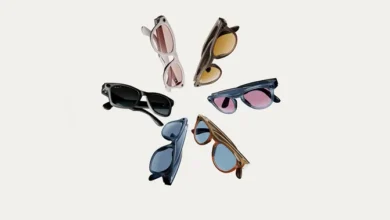TikTok Launches Live Test of Option to Automatically Identify Products in User Uploads

TikTok continues to expand its in-stream shopping push, in the hopes of evolving usage behavior, with its new option to make any object in any video “shoppable” now in live testing for some users.

As you can see in this example, posted by social media expert Lindsey Gamble, some users are now seeing a new toggle within the video upload flow that enables them to switch on “Identify Similar Objects”, which, when activated, will then identify objects in your videos, via TikTok’s object identification AI, and highlight potential product matches that you can purchase in the app.
TikTok’s been exploring the option for some time, with Bloomberg reporting last month that TikTok would be moving to expanded testing of the process.
Though as with virtually all of TikTok’s functions, it’s already active in Douyin, the Chinese version of the app, and has been for years, providing more ways for users to find and buy products in-stream.
Which is now the major money-maker for Douyin. The app drove more than $270 billion in direct product sales in 2023, rising 60% year-over-year, and it’s that success that’s now driving the strategy at TikTok, where parent company ByteDance is hoping to replicate its evolution with Western consumers.
Though thus far, it hasn’t proven to be so easy.
Western users haven’t been as open to in-stream shopping, though TikTok users are spending more in the app over time, with research from data.ai showing that TikTokers spent $3.8 billion in the app throughout 2023, up 15% year-over-year.

That’s obviously still a distance away from Douyin’s eCommerce growth, while most of TikTok’s in-stream spending thus far has also been on digital coins for creator donations, not products. But even so, there is a rising willingness to spend in the app, which is why TikTok is working to build upon that, and add in more shopping options, in order to capitalize on its opportunities.
It also aligns with TikTok’s expanding use as a discovery tool, in providing a more complete process from discovery to purchase.
All the indicators are there, and again, ByteDance has already followed this same blueprint, to great effect. But whether Western users actually want to be able to buy products in-stream is another question altogether.
There has also been some user backlash, with some suggesting that the app is becoming too commercial, and too pushy with its in-app sales elements. Which will no doubt get worse if more users switch on this new product ID process, and it will be interesting to see whether people respond to it, or find it another step in the wrong direction for the short-form video app.
I mean, sentiment alone doesn’t mean much, as often a vocal minority will raise concerns about a new element, while overall usage increases, belying such concerns.
That’ll be the same here, whether users complain or not, with the sales figures ultimately telling the tale.
Will people end up doing more shopping on TikTok, and will that provide another pathway to creator monetization, and lead to a new rise in live-stream commerce, and eventually, as has happened on Douyin, the shift towards AI influencers as sales tools?

Clearly, ByteDance remains confident that this is best way forward for the app.
Source link



